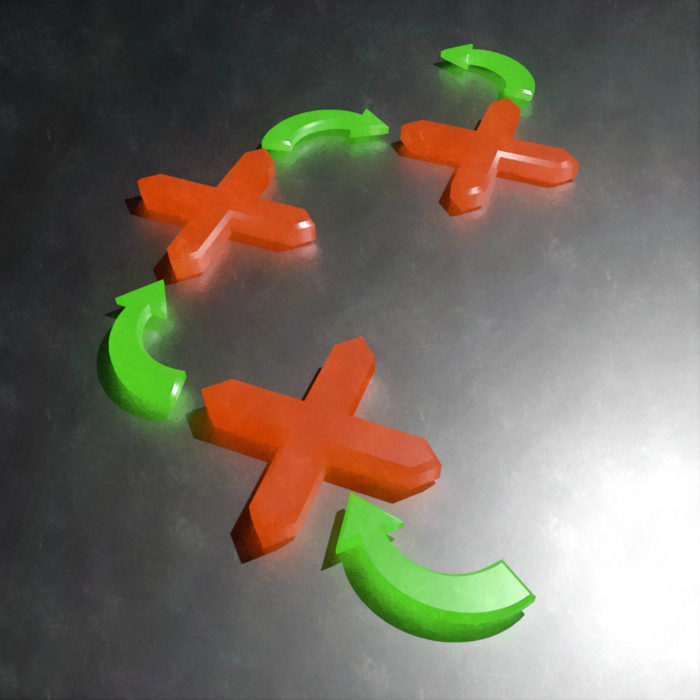Break, fix, break, fix, break…
Please Remember:
The opinions expressed are mine only. These opinions do not necessarily reflect anybody else’s opinions. I do not own, operate, manage, or represent any band, venue, or company that I talk about, unless explicitly noted.

 Want to use this image for something else? Great! Click it for the link to a high-res or resolution-independent version.
Want to use this image for something else? Great! Click it for the link to a high-res or resolution-independent version.Churchill once said that “Success is going from failure to failure without losing your enthusiasm.”
That’s also one of the best descriptions available for live sound and live music in general.
If you’re going to ever relax and enjoy the process of mixing a real show in a real room, I can tell you that you MUST embrace not getting everything right (especially not on the first try). This does not, in any way, negate my persistent insistence that you must plan and prepare carefully. What all the planning and prep does is prevent the inevitable failure or misstep from being catastrophic. It gets you closer to being exactly right on the first try, but it will rarely (if ever) actually take you all the way there and drop you off at the curb.
To be a live-sound mix-creature means living a life of screwing up and fixing that screw up, iteratively and in real time. Eventually, you get the mix to a place where you can live with it. You may even settle the show’s sound into a state where you love it. Those moments are sublime, and the more you combine a dedication to your craft AND working with great players, the more of those moments you get. It’s just that there’s always a bit of a journey to go on to reach that little bit of paradise, show to show. The process isn’t necessarily painful – sometimes it’s as simple as pushing a few faders up, unconsciously realizing that the channel level isn’t quite right until you reach the correct blend.
Of course, at other times you’ll be sitting there, wielding a parametric EQ like a sledgehammer as you try to figure out why the weird resonance in the stage-right acoustic guitar just won’t go away.
Not everybody finds it easy to accept this. I was dragged in kicking and screaming. For those of us who like to plan everything out neatly, the tendency of live shows to twist and squirm their way out of our carefully created holding pens is monstrously disconcerting.
At first.
After a while, though, you get used to the idea that the plan will get you started, and then you’ll throw it out almost as a matter of course. Figuring it out as you go becomes almost routine.
This also applies at the macro level. I just launched Concerts By Danny, a site that’s a platform for presenting shows that I’m either producing or just working for. There are public and private “sides” to the site, with the private side being a platform for managing the various logistical pieces that go into making a concert happen. As a whole, the thing is unfinished. It’s a classic case of jumping off the cliff and building a plane on the way down.
And I’m scared that the whole thing will blow up in my face. It’s very easy to fail at live music, especially when it comes to putting on shows of your own. The whole idea might be a complete boondoggle. There are times when I feel utterly stymied, thinking about all the ways the entire idea could go completely wrong and be a huge waste of time. To this point, though, I’ve managed to push past the fear and continue moving forward.
I tell myself, “The worst that can happen is that everything will completely suck, and it’s unlikely that absolutely everything will crash and burn, so…whatever. Let’s see what happens.”
And interestingly, that’s about the worst thing that can happen to the mix of a live band. So, what do you do? Well, you try to figure out which thing is causing you the most trouble, and then you try to correct it. And then you do that for the next problem, and the next problem, and so on. Eventually, you get something that works – or you realize that you’re on a dead-end street, and you cut your losses.
The point is to keep moving and to stay interested, from fader move to fader move, EQ change to EQ change, and from show to show.